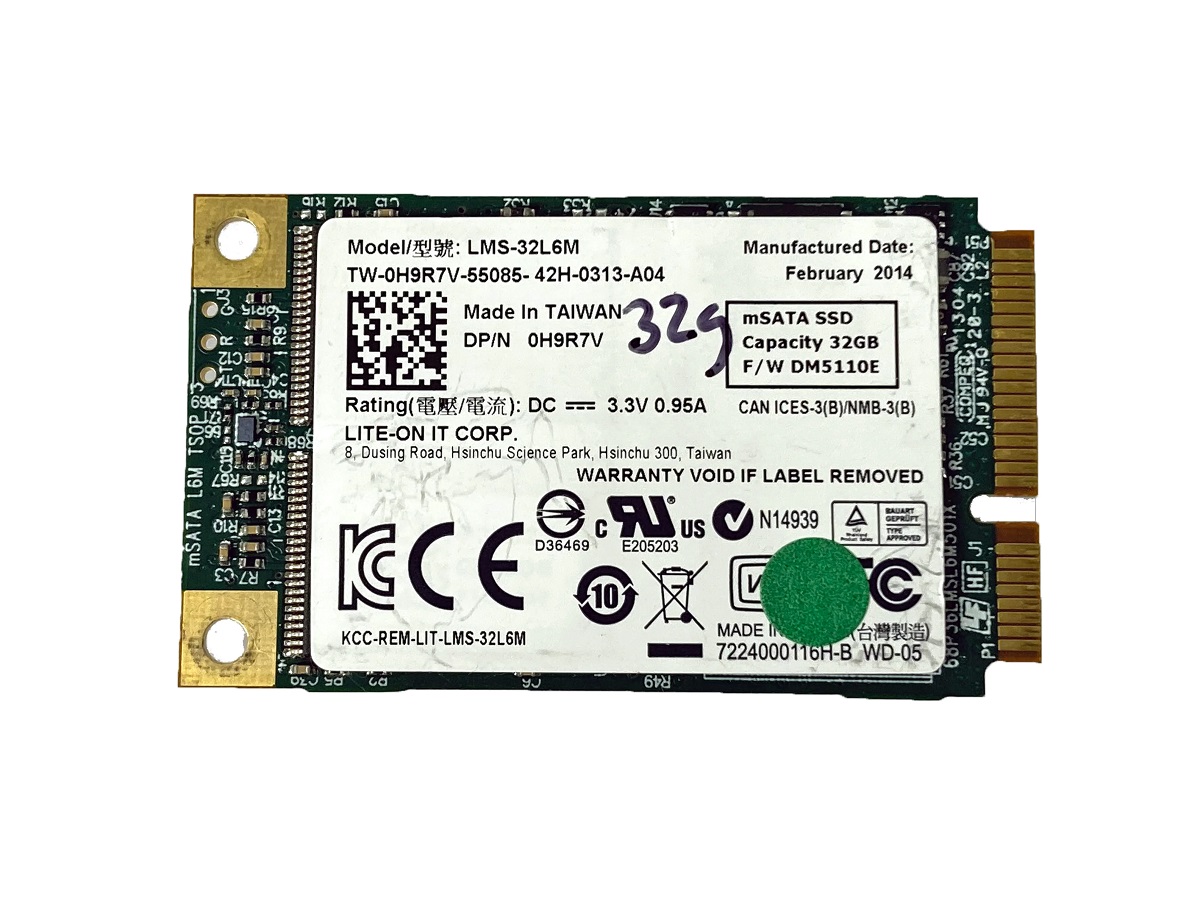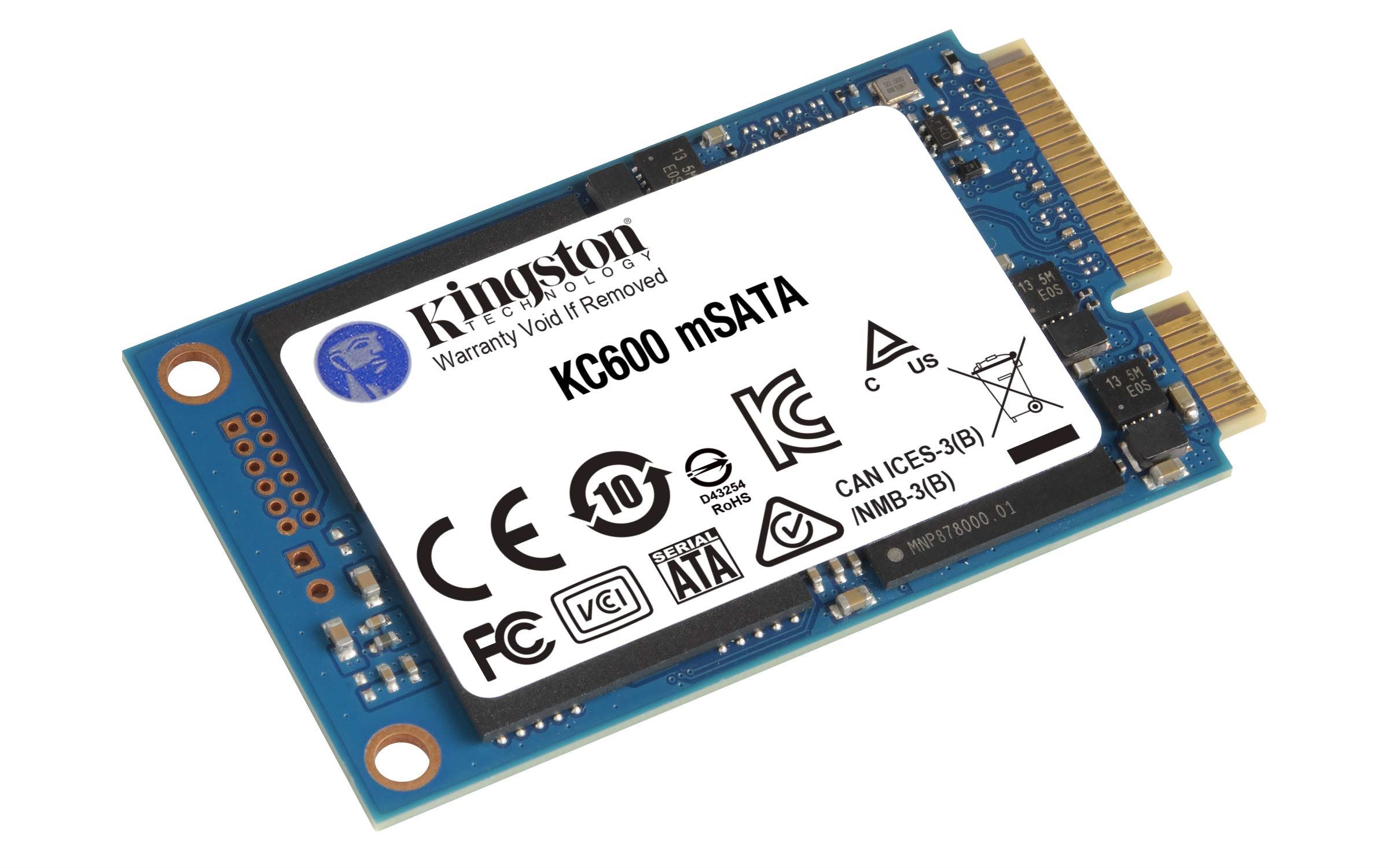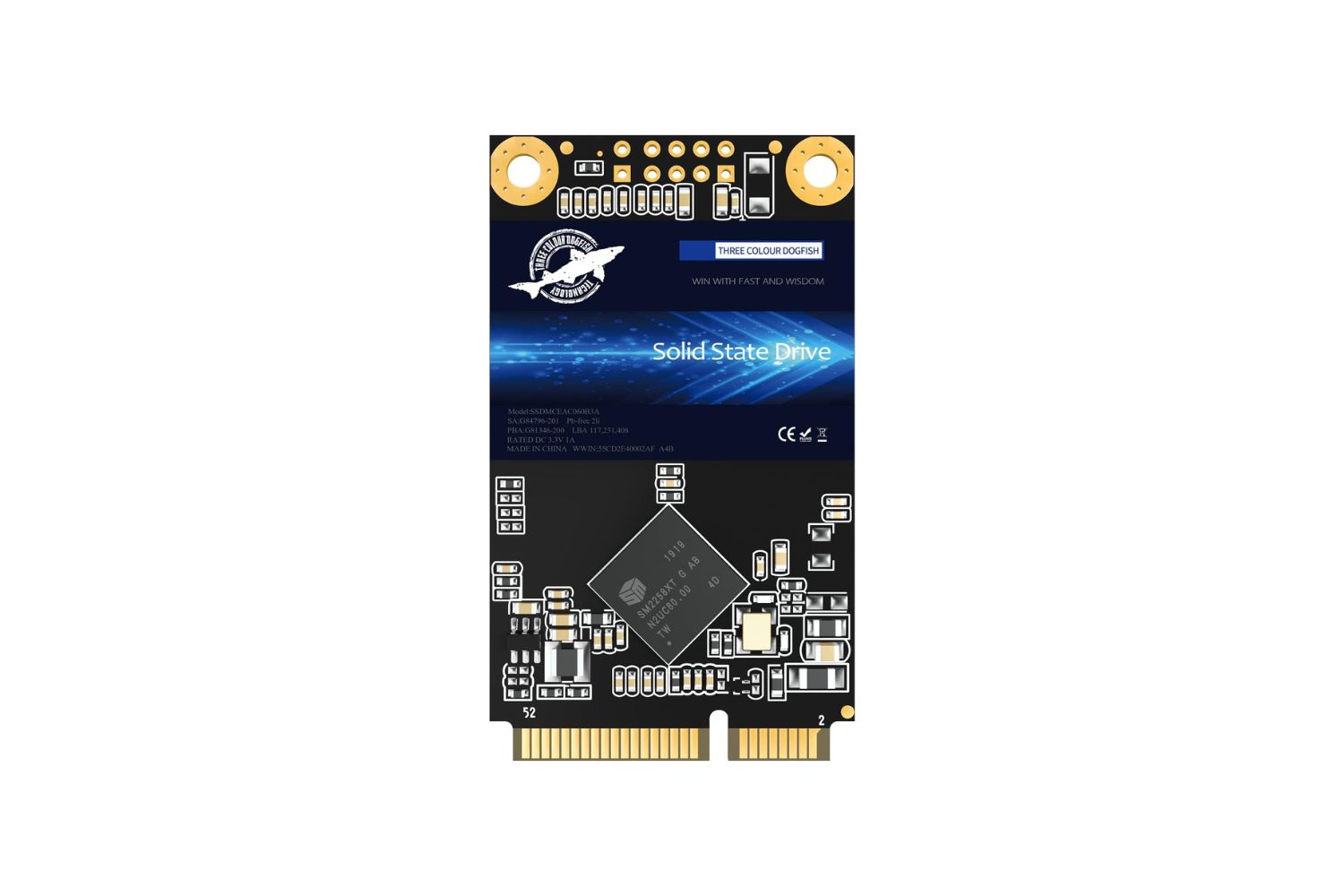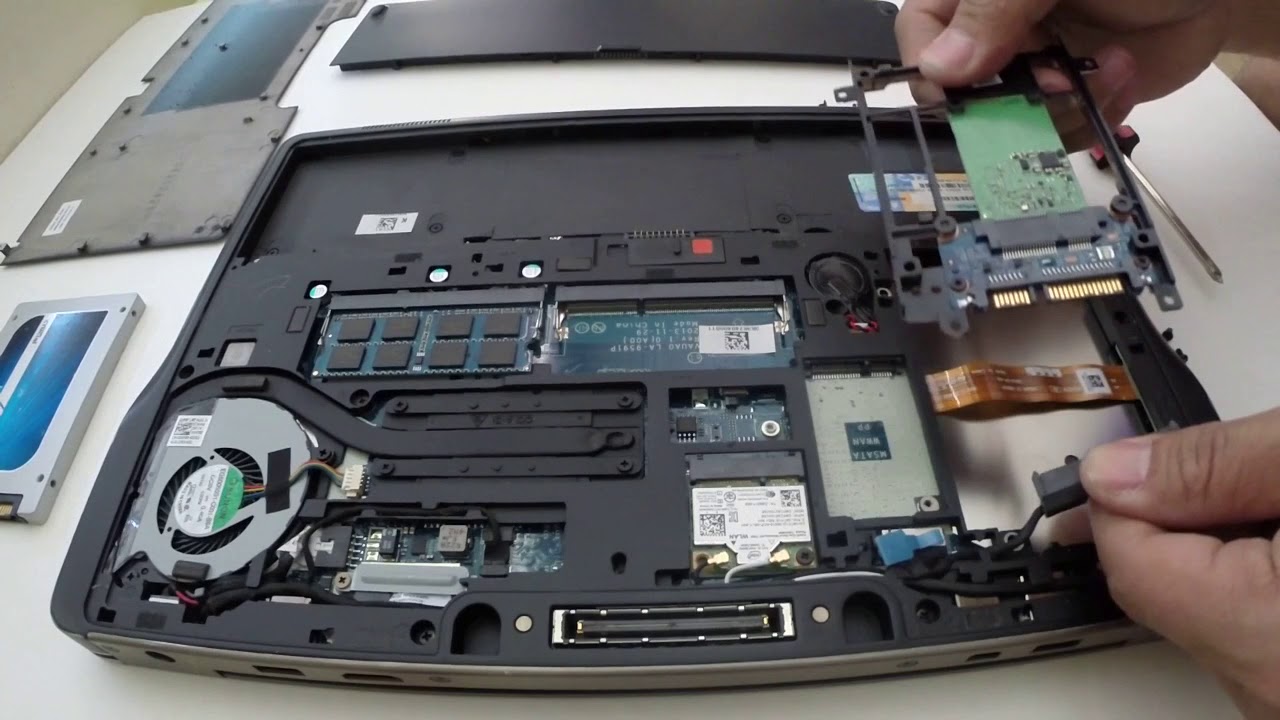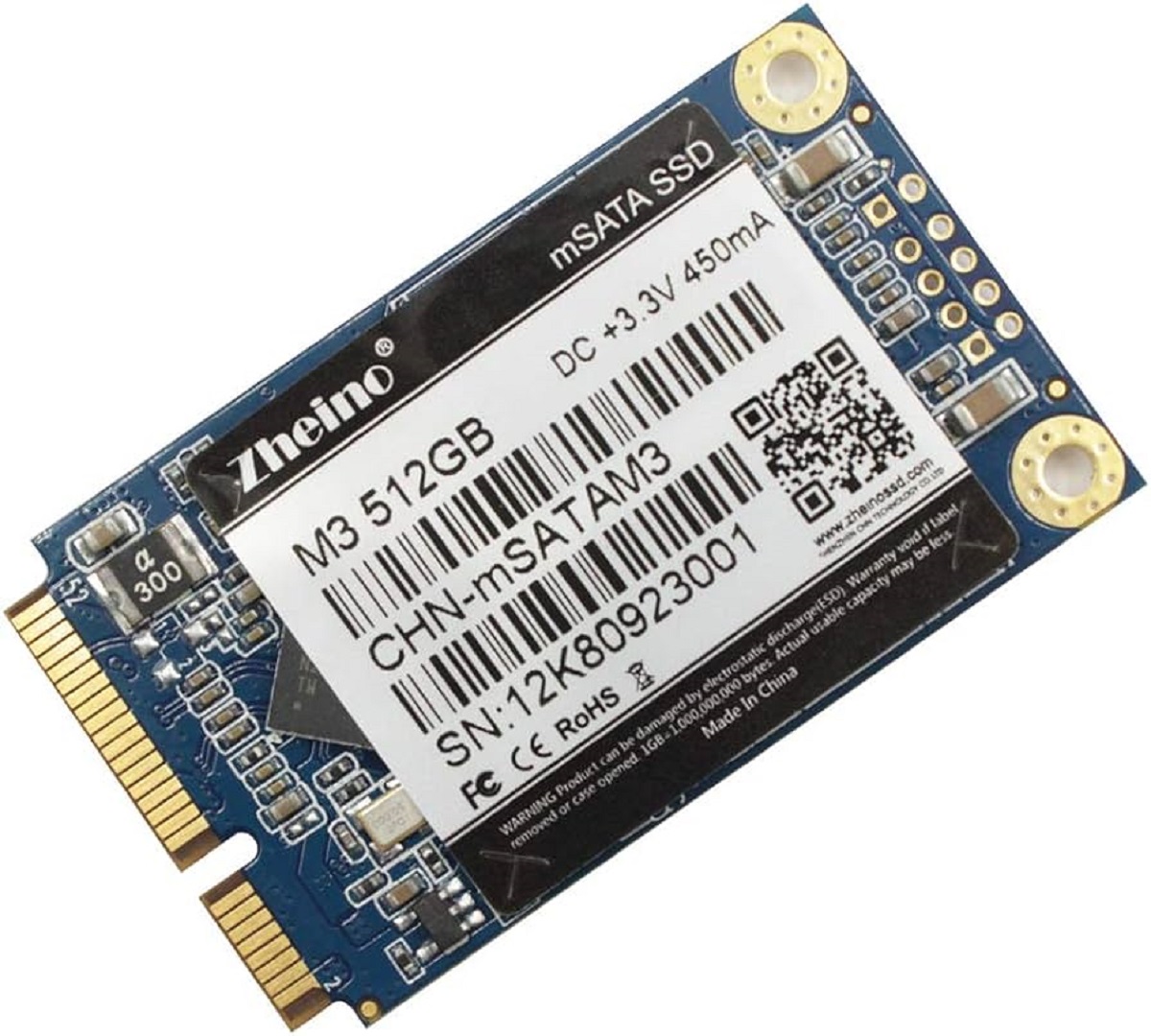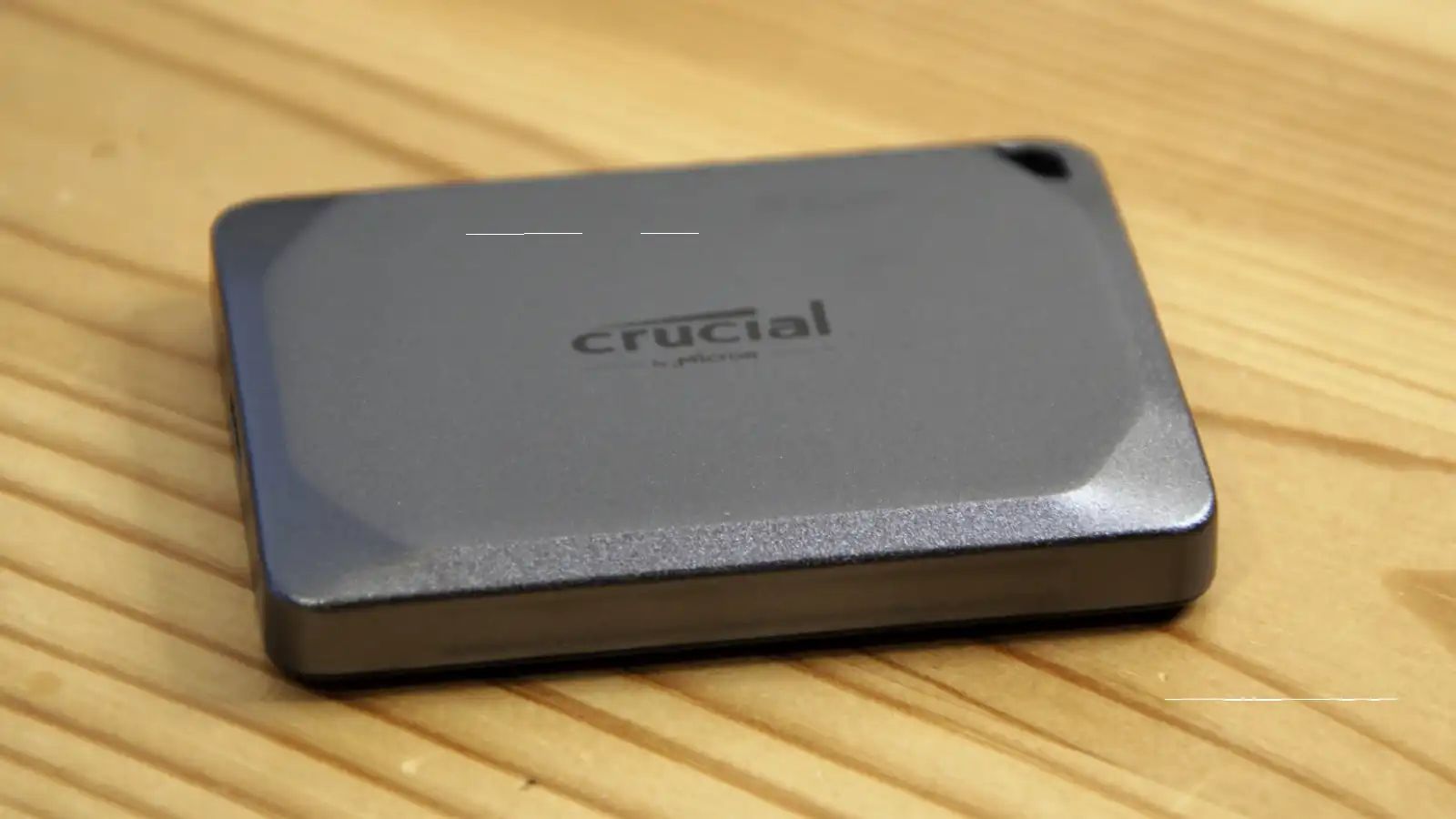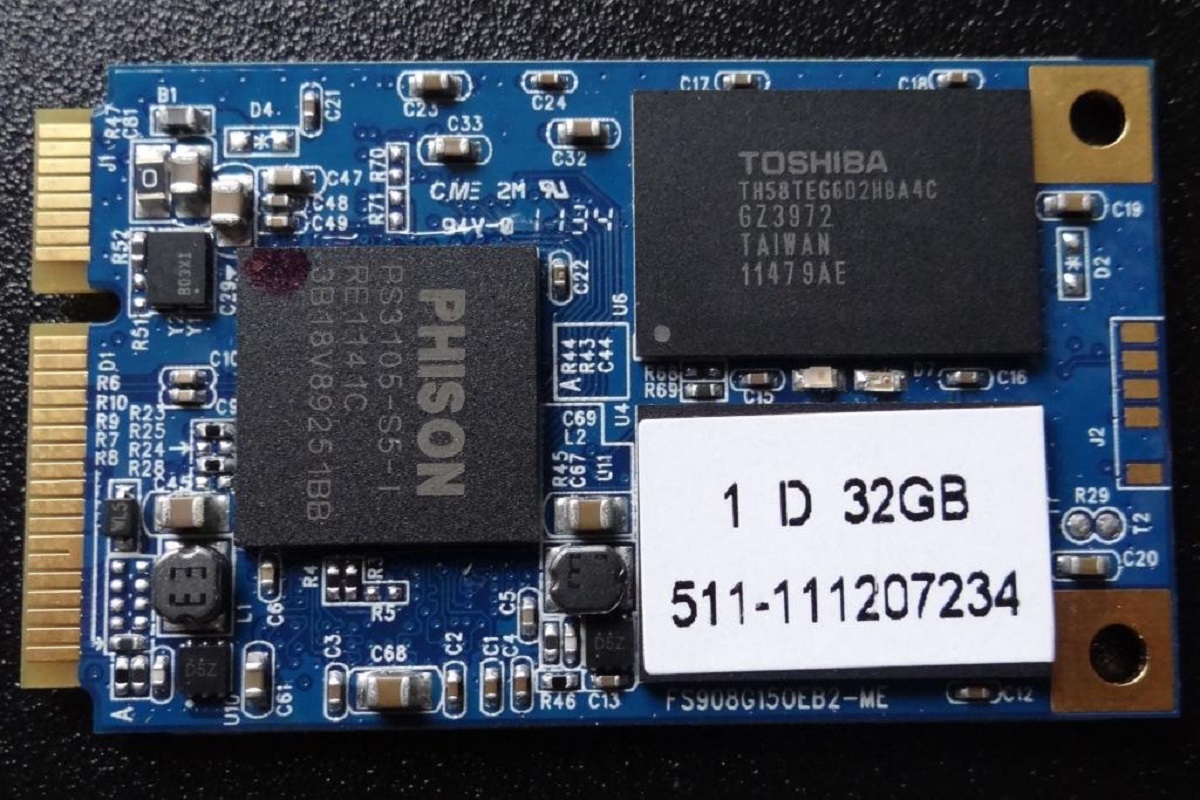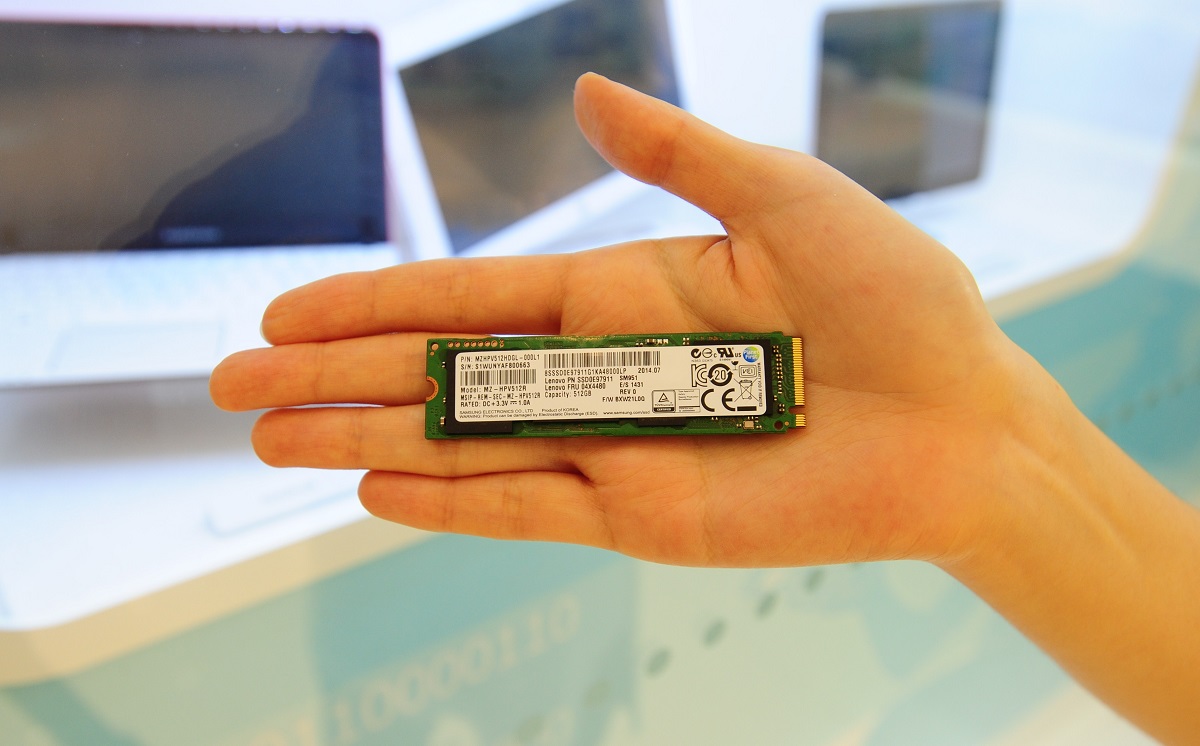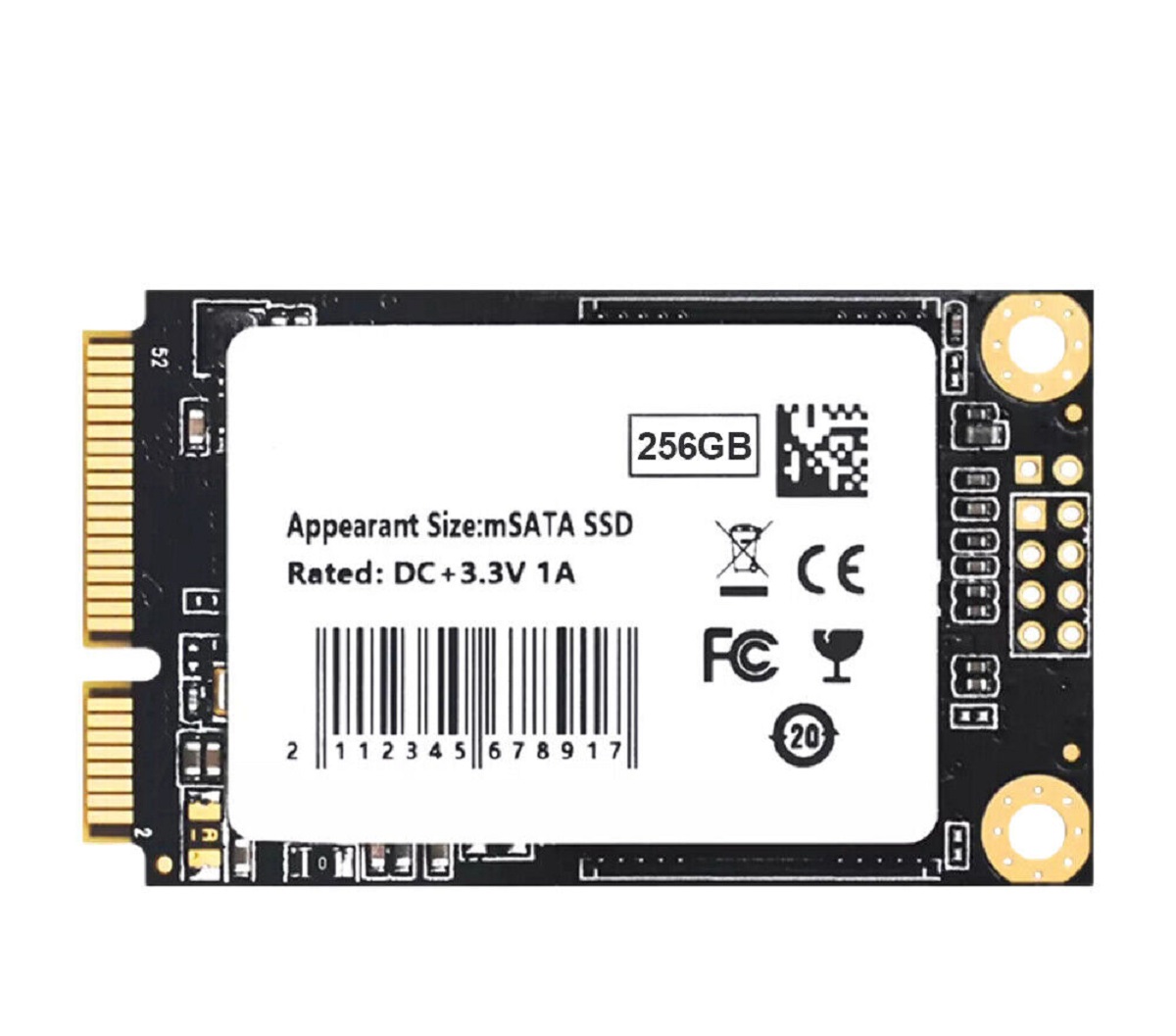Introduction
Welcome to the world of mSATA Solid State Drives (SSDs). If you’re familiar with traditional hard disk drives (HDDs), you may be wondering what all the buzz is about when it comes to SSDs. Well, prepare to be amazed! An mSATA SSD is a compact and high-performance storage solution that has revolutionized the way data is stored and accessed.
Unlike HDDs, which use spinning disks and mechanical components, mSATA SSDs utilize flash memory technology. This means faster read and write speeds, improved reliability, and better energy efficiency. But what exactly does an mSATA SSD look like, and what benefits does it offer? Let’s dive into the world of mSATA SSDs and explore their features, functions, and potential applications.
Whether you’re a casual computer user, a professional seeking high-speed storage for your work, or a gaming enthusiast craving faster load times, understanding the advantages of an mSATA SSD will help you make an informed decision when it comes to upgrading your storage solution. Let’s take a closer look at the advantages, inner workings, physical features, and common uses of these compact powerhouses.
If you’re ready to embrace the future of storage technology and take your computing experience to the next level, keep reading. By the end of this article, you’ll have a clear understanding of what an mSATA SSD is, why it’s worth considering, and how it can significantly enhance your device’s overall performance. So let’s embark on this journey into the world of mSATA SSDs!
What is an mSATA Solid State Drive?
An mSATA Solid State Drive (SSD) is a type of storage device that is designed to provide high-speed and reliable data storage. It is a smaller form factor compared to traditional 2.5-inch SSDs, making it ideal for space-constrained devices such as ultrabooks, tablets, and mini PCs.
The acronym “mSATA” stands for “mini-Serial ATA,” which refers to the interface that the drive uses to connect with the computer’s motherboard. The mSATA interface is based on the Serial ATA (SATA) standard and was first introduced in 2009 as a solution for the growing demand for smaller and more efficient storage options.
One of the key advantages of an mSATA SSD is its compact size. Measuring just 30mm x 50.95mm, an mSATA SSD can easily fit into the tiny slots found in modern devices. Despite its small form factor, it offers impressive storage capacities ranging from 32GB to 1TB, allowing you to store a vast amount of data, including documents, photos, videos, and even larger applications.
Another advantage of an mSATA SSD is its superior performance compared to traditional HDDs. With no moving parts, an mSATA SSD can access and transfer data at incredible speeds, resulting in faster boot times, quicker application launches, and seamless multitasking. This speed boost is especially noticeable when it comes to tasks that involve reading and writing large files, such as video editing or gaming.
Furthermore, mSATA SSDs are known for their reliability and durability. Since they don’t rely on mechanical parts like HDDs, they are less prone to failure or damage. They are also more resistant to shock, vibrations, and temperature fluctuations, making them an excellent choice for portable devices that are frequently used on-the-go.
In terms of compatibility, mSATA SSDs are designed to be backward compatible with SATA II and SATA III interfaces, allowing them to be easily integrated into existing systems. Additionally, many modern motherboards and laptops come with mSATA slots or support for M.2 SSDs with an mSATA adapter, providing more flexibility in terms of installation options.
In summary, an mSATA Solid State Drive offers a compact, high-speed, and reliable storage solution for devices with limited space. Its small form factor, impressive performance, and durability make it a versatile choice for a wide range of applications, from everyday computing tasks to resource-intensive tasks such as video editing and gaming.
Advantages of an mSATA Solid State Drive
The use of an mSATA Solid State Drive (SSD) over traditional hard disk drives (HDDs) offers several significant advantages that greatly enhance the overall performance and user experience. Let’s explore these advantages in more detail:
1. Speed and Performance: One of the main advantages of an mSATA SSD is its lightning-fast speed and performance. With no moving parts, the data access and transfer speeds are significantly faster compared to HDDs. This translates to faster boot times, quicker application launches, and smoother multitasking, providing a seamless computing experience.
2. Reliability and Durability: Unlike HDDs, which have sensitive moving parts that can be easily damaged, mSATA SSDs are highly reliable and durable. They are less prone to failure, making them more suitable for portable devices and environments where shock and vibrations are common. Additionally, they are resilient to temperature fluctuations, ensuring that your data remains safe and accessible even under extreme conditions.
3. Compact Form Factor: The small physical size of an mSATA SSD is a significant advantage, especially for devices with limited space. With dimensions of just 30mm x 50.95mm, an mSATA SSD can easily fit into ultrabooks, mini PCs, tablets, and other small form factor devices, allowing you to maximize storage capacity without sacrificing portability.
4. Energy Efficiency: mSATA SSDs are known for their energy efficiency. They consume less power compared to HDDs, which translates to longer battery life for mobile devices and reduced electricity costs for desktop computers. This makes them an excellent choice for users who prioritize energy savings and environmental sustainability.
5. Noiseless Operation: Since mSATA SSDs have no moving parts, they operate silently. This is a significant advantage over HDDs, which produce noticeable noise due to the spinning disks and rotating components. The absence of noise not only provides a more peaceful work environment but also contributes to overall system reliability and longevity.
6. Improved Gaming Experience: Gamers can benefit greatly from using an mSATA SSD. The faster load times and data access speeds ensure quicker game launches, reduced in-game loading screens, and improved overall performance. This translates to a smoother and more immersive gaming experience.
7. Compatibility and Upgradability: mSATA SSDs are designed to be compatible with existing systems. They can be easily integrated into devices that have mSATA slots or support for M.2 SSDs with an mSATA adapter. This provides flexibility for users to upgrade their storage solutions without the need for a complete system overhaul.
In summary, the advantages of an mSATA Solid State Drive include speed and performance, reliability and durability, compact form factor, energy efficiency, noiseless operation, enhanced gaming experience, and compatibility. These benefits make mSATA SSDs the preferred choice for users who prioritize speed, efficiency, and reliability in their computing devices.
How does an mSATA Solid State Drive work?
Understanding how an mSATA Solid State Drive (SSD) works requires a closer look at its internal components and data storage mechanism. Unlike traditional hard disk drives (HDDs), which use spinning disks and mechanical parts, mSATA SSDs rely on flash memory technology to store and retrieve data.
At the heart of an mSATA SSD is the memory controller. This controller manages the data transfer process between the flash memory chips and the computer’s motherboard. It ensures that the data is read from and written to the correct locations, optimizing the performance of the drive.
The flash memory chips in an mSATA SSD are made up of NAND flash memory cells. These cells store electrical charges to represent the binary data (0s and 1s) that make up files and programs. Each cell can hold multiple bits of data, with Multi-Level Cell (MLC) and Triple-Level Cell (TLC) being the most common types of NAND flash memory used in mSATA SSDs.
When data needs to be written to an mSATA SSD, the memory controller sends electrical signals to the appropriate NAND cells, which changes the state of the cells to store the desired data. When data needs to be read from the drive, the memory controller retrieves the electrical charges from the NAND cells and converts them back into the original binary data.
One of the most significant advantages of using flash memory in an mSATA SSD is its ability to access data quickly. Unlike HDDs that require the mechanical movement of the disk’s read/write head to access data, the electronic nature of flash memory allows for near-instantaneous data retrieval. This results in faster overall system performance and reduced loading times for applications and files.
Another key feature of mSATA SSDs is wear leveling. Flash memory has a limited number of write cycles before it becomes less reliable over time. Wear leveling technology ensures that data is evenly distributed across the memory cells, preventing individual cells from wearing out faster than others. This extends the lifespan and durability of the mSATA SSD.
Furthermore, mSATA SSDs often utilize advanced error correction algorithms and data integrity checks to ensure that stored data remains intact and free from corruption. This further enhances the reliability and data integrity of the drive.
In summary, an mSATA Solid State Drive works by utilizing flash memory technology to store and retrieve data. Its memory controller manages the data transfer process, while the NAND flash memory cells store the binary data electronically. This electronic storage mechanism allows for faster data access, reduced loading times, wear leveling for durability, and advanced error correction for data integrity.
Physical features of an mSATA Solid State Drive
When it comes to the physical features of an mSATA Solid State Drive (SSD), it is important to consider its size, connectors, and overall design. Let’s explore these features in more detail:
1. Compact Form Factor: One of the standout features of an mSATA SSD is its small size. With dimensions of 30mm x 50.95mm, it is significantly smaller than traditional 2.5-inch SSDs. This compact form factor makes mSATA SSDs ideal for devices with limited space, such as ultrabooks, mini PCs, and tablets.
2. mSATA Connector: The mSATA SSD connects to the computer’s motherboard using an mSATA connector. This connector has multiple pins that interface with the corresponding slots on the motherboard. The mSATA connector follows the Serial ATA (SATA) standard, ensuring compatibility with existing systems.
3. Single-sided or Double-sided Design: mSATA SSDs come in both single-sided and double-sided designs. Single-sided mSATA SSDs have components, including NAND flash memory chips, on one side of the circuit board, while double-sided SSDs have components on both sides. The choice between single-sided and double-sided depends on the specific capacity and performance requirements of the device.
4. Mounting Holes: mSATA SSDs typically have mounting holes on the circuit board. These holes allow the drive to be securely attached to the motherboard or a compatible adapter. Mounting holes provide stability and ensure that the mSATA SSD remains firmly in place during operation.
5. Label and Branding: mSATA SSDs usually feature a label or branding on the top side of the circuit board. This label may display the brand name, model number, capacity, and other relevant information about the drive. The labeling helps users identify and differentiate between various mSATA SSD models.
6. Heat Dissipation: Some mSATA SSDs include a heat spreader or heat sink to dissipate heat generated during operation. This helps to maintain optimal operating temperatures and prevent overheating, ensuring the longevity and reliability of the drive.
7. Indicator LEDs: Some mSATA SSDs feature indicator LEDs that provide visual status information. These LEDs may indicate power status, data transfer activity, or drive health. The LED indicators offer a quick and convenient way for users to monitor the operation and performance of the mSATA SSD.
In summary, the physical features of an mSATA Solid State Drive include its compact form factor, mSATA connector, single-sided or double-sided design, mounting holes for secure installation, label or branding for identification, heat dissipation measures, and indicator LEDs for status monitoring. These features contribute to the overall functionality and compatibility of the mSATA SSD in a variety of devices.
Comparison with other types of Solid State Drives
When it comes to Solid State Drives (SSDs), there are various types available in the market, each with its own set of advantages and features. Let’s compare mSATA SSDs with two other popular types of SSDs: SATA SSDs and M.2 SSDs.
1. Form Factor: In terms of form factor, mSATA SSDs have a smaller size compared to SATA SSDs and M.2 SSDs. This makes them more suitable for devices with limited space, such as ultrabooks and mini PCs. SATA SSDs follow the standard 2.5-inch form factor, while M.2 SSDs come in several length options, such as 30mm, 42mm, 60mm, and 80mm.
2. Compatibility: mSATA SSDs are compatible with both SATA II and SATA III interfaces, allowing them to be used with a wide range of devices. SATA SSDs are specifically designed for SATA interfaces, while M.2 SSDs can use different interfaces, such as SATA, PCI Express (PCIe), or a combination of both, depending on the specific variant.
3. Performance: When it comes to performance, all three types of SSDs offer significantly faster speeds compared to traditional hard disk drives (HDDs). However, there can be variations within each type. M.2 SSDs, especially those utilizing PCIe NVMe (Non-Volatile Memory Express) technology, generally offer the highest performance, with faster data transfer rates and lower latency. SATA SSDs and mSATA SSDs offer slightly lower performance but are still significantly faster than HDDs.
4. Storage Capacity: When it comes to storage capacity, all three types of SSDs offer a wide range of options. SATA SSDs and mSATA SSDs typically provide larger storage capacities, ranging from 128GB to several terabytes. M.2 SSDs come in various capacities but are more commonly available in smaller capacities, such as 128GB to 1TB. However, larger capacity M.2 options are also available.
5. Upgradability: Upgrading an mSATA SSD can be more challenging compared to SATA SSDs and M.2 SSDs. While SATA SSDs can be easily replaced or upgraded due to their universal compatibility, mSATA SSDs require a specific mSATA slot on the motherboard. M.2 SSDs offer the most flexibility in terms of upgradability, as they can fit into various slots, depending on the interface supported by the motherboard.
6. Price: Price can vary across different models and brands, but generally, mSATA SSDs and SATA SSDs tend to be more affordable compared to M.2 SSDs. M.2 SSDs, especially those utilizing high-speed PCIe NVMe technology, tend to be more expensive due to their superior performance capabilities.
Ultimately, the choice between mSATA SSDs, SATA SSDs, and M.2 SSDs depends on individual needs and device requirements. mSATA SSDs are ideal for space-constrained devices, SATA SSDs offer a good balance between performance and affordability, while M.2 SSDs provide the highest performance and flexibility. Evaluating factors such as compatibility, form factor, performance, storage capacity, upgradability, and price will help you make an informed decision when selecting the right type of SSD for your specific needs.
Common uses of an mSATA Solid State Drive
The compact and high-performance nature of mSATA Solid State Drives (SSDs) makes them well-suited for various applications across different industries. Let’s explore some of the common uses of mSATA SSDs:
1. Ultrabooks and Laptops: mSATA SSDs are frequently used in ultrabooks and laptops due to their small form factor and low power consumption. They provide faster boot times, improved overall system performance, and better energy efficiency, resulting in a smoother and more responsive user experience.
2. Mini PCs and All-in-One Computers: With the increasing popularity of mini PCs and all-in-one computers, mSATA SSDs have become the go-to storage solution. Their compact size allows for efficient space utilization in these compact systems without compromising performance.
3. Industrial Computing: Due to their durability and resistance to shock and temperature variations, mSATA SSDs are commonly used in industrial computing applications. They provide reliable and high-speed storage for industrial control systems, factory automation, and other ruggedized environments.
4. Digital Signage and Kiosks: mSATA SSDs are an excellent choice for digital signage and kiosk applications. Their small size allows for easy integration into display panels or kiosk enclosures, and their reliable and fast storage capabilities ensure smooth and uninterrupted multimedia playback and content delivery.
5. POS Systems and Point-of-Sale Terminals: mSATA SSDs provide efficient storage for point-of-sale (POS) systems and terminals. With their fast data access and transfer speeds, mSATA SSDs ensure quick transaction processing, efficient inventory management, and smooth overall operation in retail and hospitality environments.
6. Gaming Consoles and Gaming PCs: mSATA SSDs enhance gaming performance by reducing game load times and improving overall system responsiveness. They are commonly used in gaming consoles, gaming PCs, and high-end laptops to provide gamers with a seamless and immersive gaming experience.
7. Embedded Systems and IoT Devices: mSATA SSDs are an ideal storage solution for embedded systems and Internet of Things (IoT) devices. They offer reliable and fast storage capabilities in applications such as smart home devices, industrial IoT applications, and network appliances.
8. Mobile Devices: Although less common, some mobile devices, such as tablets and certain smartphones, are designed with mSATA SSD storage options. The small size and low power consumption of mSATA SSDs make them suitable for these portable devices that require fast and efficient storage.
In summary, the common uses of mSATA Solid State Drives include ultrabooks and laptops, mini PCs and all-in-one computers, industrial computing applications, digital signage and kiosks, POS systems and point-of-sale terminals, gaming consoles and gaming PCs, embedded systems and IoT devices, and select mobile devices. The high performance, compact size, and durability of mSATA SSDs make them a versatile storage solution across various industries and applications.
Recommendations and considerations when using an mSATA Solid State Drive
When using an mSATA Solid State Drive (SSD) for your storage needs, there are several recommendations and considerations to keep in mind to ensure optimal performance and longevity:
1. Compatibility: Before purchasing an mSATA SSD, ensure that your device supports the mSATA interface and has an available mSATA slot. Check the device’s specifications or consult the manufacturer for compatibility information.
2. Capacity Planning: Determine your storage requirements and choose the appropriate capacity for your mSATA SSD. Consider factors such as the size of your operating system, applications, and files. It’s advisable to leave some free space on the drive to maintain performance and longevity.
3. Data Migration: If you are upgrading from a traditional hard disk drive (HDD) to an mSATA SSD, consider migrating your data. Use cloning software or perform a fresh install of your operating system and applications to take full advantage of the speed and performance benefits of the SSD. Backup your important data prior to the migration process.
4. Firmware Updates: Keep your mSATA SSD firmware up to date. Check the manufacturer’s website periodically for firmware updates, as they often include performance improvements and bug fixes.
5. Regular Maintenance: Perform regular maintenance tasks, such as running disk cleanup and optimizing drives, to keep your mSATA SSD running smoothly. This helps to remove unnecessary files and consolidate data, which can improve performance and extend the lifespan of the drive.
6. Power Management: Adjust power management settings on your device to optimize power consumption. Since mSATA SSDs consume less power compared to HDDs, you can configure your device to maximize battery life for mobile devices or minimize power usage for desktop systems.
7. Temperature Monitoring: Monitor the operating temperature of your mSATA SSD, especially during heavy usage or prolonged periods of high data transfer. Excessive heat can affect performance and reliability. Ensure proper ventilation and cooling within your device to keep the mSATA SSD within recommended temperature limits.
8. Data Backup: Despite the reliability of mSATA SSDs, it is always important to maintain regular backups of your important data. Use external storage devices, cloud storage, or backup software to create copies of your data to protect against data loss or drive failure.
9. Warranty and Support: Choose an mSATA SSD from reputable manufacturers that offer reliable warranty coverage and customer support. This ensures that you have access to assistance and potential replacements in case of any issues or failures.
Incorporating these recommendations and considerations into your usage of an mSATA Solid State Drive will help maximize its performance, lifespan, and data integrity. Enjoy the benefits of fast and efficient storage while taking the necessary steps to maintain and safeguard your data.
FAQs about mSATA Solid State Drives
Here are some frequently asked questions about mSATA Solid State Drives (SSDs) to provide further clarity on their features, functionality, and usage:
Q1: Can I use an mSATA SSD as an external storage device?
Yes, you can use an mSATA SSD as an external storage device. You will need an mSATA to USB adapter or enclosure to connect the drive to your computer or other compatible devices. This allows you to enjoy the benefits of an mSATA SSD’s speed and performance on the go.
Q2: Can I install an mSATA SSD alongside an existing hard disk drive (HDD) in my laptop or desktop computer?
Yes, you can install an mSATA SSD alongside an existing HDD in many laptops and desktop computers. However, you will need to check if your device has an available mSATA slot and if the system supports booting from the mSATA SSD. Ensure that you follow the proper installation procedures and configure your system to recognize the mSATA SSD as a bootable drive if desired.
Q3: What is the difference between mSATA and M.2 SSDs?
The main difference between mSATA and M.2 SSDs lies in their physical form factors and connectors. While mSATA SSDs have a small rectangular shape and use the mSATA connector, M.2 SSDs are smaller and have various lengths, using the M.2 connector. M.2 SSDs often offer faster performance and more flexibility, supporting different interfaces like SATA and PCIe.
Q4: Can I replace my laptop’s existing mSATA SSD with a larger capacity one?
Yes, you can replace your laptop’s existing mSATA SSD with a larger capacity one, as long as the new SSD is compatible with your device and is supported by the BIOS. However, make sure to back up your data before proceeding with the replacement process.
Q5: Can I use an mSATA SSD in a gaming console, such as a PlayStation or Xbox?
No, mSATA SSDs are generally not compatible with gaming consoles like PlayStations or Xboxes. These consoles have specific storage requirements and interfaces that are not designed to accommodate mSATA SSDs. You may need to check for console-specific storage upgrade options or seek guidance from the console manufacturer.
Q6: Are mSATA SSDs faster than SATA HDDs?
Absolutely! mSATA SSDs are much faster than traditional SATA HDDs. The absence of moving parts in SSDs allows for faster read and write speeds, resulting in significantly improved performance. This means faster boot times, quicker application launches, and seamless multitasking compared to HDDs.
Q7: Can I use an mSATA SSD in a Mac computer?
Yes, some Mac computers, specifically older models, may have an mSATA slot that can be used to install an mSATA SSD. However, it is important to check compatibility and specific installation guidelines for your particular Mac model before making a purchase or attempting to install an mSATA SSD.
These FAQs should help answer some common questions about mSATA Solid State Drives. If you have more specific inquiries, it is always advisable to consult the product documentation or seek assistance from the manufacturer or an authorized retailer.
Conclusion
mSATA Solid State Drives (SSDs) have revolutionized the world of storage, offering a compact and high-performance solution for a variety of devices. Their advantages, such as fast read and write speeds, reliability, durability, and small form factor, make them a popular choice in the computing industry.
In this article, we’ve explored the key aspects of mSATA SSDs, including their definition, advantages, how they work, the physical features they possess, and their common uses. We’ve also compared them with other types of SSDs and provided recommendations for optimal usage.
From ultrabooks and laptops to gaming consoles and embedded systems, mSATA SSDs find their place in numerous applications. Their ability to provide faster boot times, superior performance, and efficient storage has transformed the user experience across various industries.
Before incorporating an mSATA SSD into your system, it’s essential to consider factors like compatibility, capacity planning, data migration, regular maintenance, and proper power management. These considerations will ensure that you maximize the performance, reliability, and lifespan of your mSATA SSD.
Now that you have a comprehensive understanding of mSATA SSDs, their functionalities, and their benefits, you can confidently make informed decisions when choosing the ideal storage solution for your needs.
Embrace the power of mSATA SSDs and witness the incredible speed, efficiency, and reliability they bring to your computing devices. Upgrade your storage and unlock a whole new level of performance and convenience.







